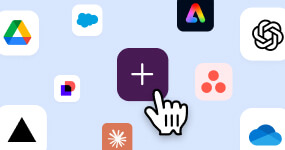When you work in an organization with teams of people spread out around the globe, time zones and distance can present some working challenges.
Our own teams here at Slack are divided up among eight offices—spanning four continents and five time zones—and we know that many of our customers share this way of working. Here, we’ve noted several tips on how to use Slack channels and features to execute work seamlessly across distributed teams.
Set expectations around communication cadence
When you begin a project (ideally, in a new channel) that includes people in different time zones, it’s important to set expectations around how the team communicates.
Channels may contain less real-time conversation. Interactions between people may be limited to brief periods of time where their working hours overlap. But anyone can still ask questions in the channel with the assumption that other team members will respond when they come online. You may even want to edit the channel purpose to reflect that the channel is asynchronous and that responses may take a few hours.
As with any kind of project involving a team, it’s important to pin documents to channels — like project briefs and timelines — that lay out key tasks and goals.
Consider adding a project management app like Asana to your Slack workspace to make sure that everyone is updated on progress throughout the life cycle of the project — no matter where they’re located.
Get to know your team better with custom profiles
On paid Slack teams, user profiles can contain an unlimited number of custom fields. For distributed teams, it’s useful to add a profile field indicating people’s office location, to go alongside the listed time zone.
There are other custom fields for profiles that may be helpful to global teams, including:
- Which team the person is on (which helps others identify the right experts to tap internally for support or additional insight).
- Contact information and emergency contact information (including country codes).
- Pronunciation guide for names (to avoid any potential awkwardness when you meet in person or on a call).
Developers can also use Slack’s API to make custom profile fields even more useful. We’ve heard about a global design firm whose developers created an internal bot to help source team members for new projects.
To see what resources they have available throughout the company, at any given time, managers could search for “all available iOS developers” and the bot would look through people’s profile fields on Slack for anyone with “iOS” and “developer” in their title. Then, the bot cross-references that information with the person’s location, and looks up whether or not that person is assigned to any active projects in Asana. If a developer isn’t assigned to any current project, the resource manager would instantly know.
An additional thing to be mindful of: Before you send a direct message to someone, especially around an urgent or time-sensitive matter, it’s a good idea to consult their profile to see whether they’d actually be around to help.
Know everyone’s status at a glance
Everyone’s custom status in Slack can be a gentle reminder of their location. In our own team’s workspace, we’ve uploaded custom emoji for each office location so that people can indicate where they’re located. It’s especially handy for teams whose members travel frequently (think: sales teams) or organizations with workforces made up of independent or remote field workers.

Set the stage in the channel topic
Our own customer experience team are masterful at managing information in Slack. They’ve set up dedicated “triage” channels where team members can sort and prioritize troubleshooting requests from customers. For this kind of mission-critical work, we make sure that team members from our offices in Australia, North America, and Western Europe all participate to provide 24-hour, around-the-clock coverage.

In triage channels, the channel topic is often used to communicate essential information at a glance, like who’s currently “on duty” and can be contacted in the event of a problem.
Internationalization abounds
Working with teams crossing multiple time zones has its challenges but, with a little bit of forethought, Slack can be set up to shorten those distances. Whether it’s through open channels that set expectations around response times, custom profiles that help people get to know each other better, and other indicators conveying essential information like location and who is taking the lead, all of these features were designed with better teamwork in mind.
A quick reminder: Slack is available in English (U.S. and U.K.), French, German, Japanese, Portuguese (Brazil) and Spanish (Latin America and Spain). And while large organizations may set a default language to communicate in, individuals may be more comfortable setting Slack to their preferred language.






